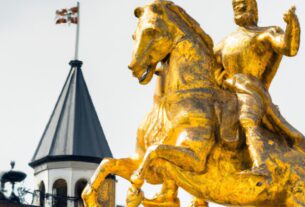Have you ever gazed upon a mountain and pondered whether it was once a giant turned to stone? The idea of mountains as petrified giants has captivated people for centuries. But where did this notion originate, and is there any truth to it?
The Mythology and Folklore
The concept of mountains as petrified giants finds its roots in the mythology and folklore of various cultures around the world. Many ancient societies revered mountains as sacred sites, believing them to be the dwelling places of gods and goddesses. It was a widespread belief that these majestic structures were once living beings that were turned to stone by divine powers.
The Geology of Mountains
Despite the mythical aspects, there is a scientific explanation for the formation of mountains. Mountains are shaped by geological processes that can span millions of years. Tectonic plate movements, volcanic activity, erosion, and weathering all contribute to the creation of these towering formations. Over time, these forces reshape the Earth, giving rise to the peaks and valleys we see today.
Mountains and Cultural Significance
Mountains have played significant roles in the mythology and folklore of cultures worldwide. Mount Olympus, for instance, was believed to be the dwelling place of Greek gods, while the Himalayas are considered the abode of Lord Shiva in Hinduism. Native American cultures often viewed mountains as sacred and associated them with spirits or moments of transformation.
The concept of petrified giants aligns with these myths and legends. In Norse mythology, for example, it was believed that mountains were formed from the body of a defeated giant. Similarly, various cultures have attributed divine origins to mountains, seeing them as the remains of once-living beings.
The Science and Debunking
While the concept of mountains as petrified giants is fascinating, it lacks scientific evidence. Geologists explain that mountains form through complex geological processes over an extended period. The shapes and patterns resembling human or animal shapes in rock formations are the result of natural erosion, not the remnants of living beings. The notion has persisted due to confirmation bias, wherein people interpret these formations to confirm their preexisting beliefs.
The Cultural Significance and Interpretations
Mountains hold great cultural significance throughout human history. They inspire awe and wonder, symbolizing strength, power, and resilience. Mountains as petrified giants provide a metaphorical connection to the natural world and our search for meaning and purpose. They evoke emotions related to our fear of death and desire for immortality, suggesting the transformative potential even in death.
In conclusion, the concept of mountains as petrified giants has fascinated humanity for centuries. It intertwines mythology, folklore, and even a scientific understanding of geological processes. While lacking scientific support, the idea continues to capture our imagination, reminding us of our deep connection to the natural world.
At TooLacks, we strive to provide you with the latest knowledge and insights on nature, gardening, and animals. We hope this article has shed light on the concept of mountains as petrified giants. If you have any questions or comments, feel free to reach out to us. Thank you for reading!



